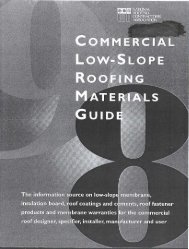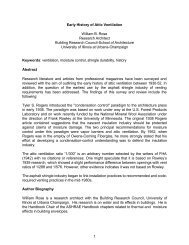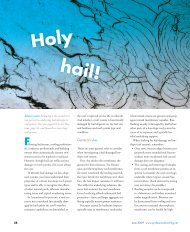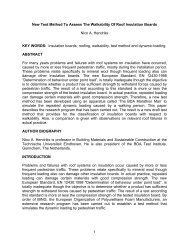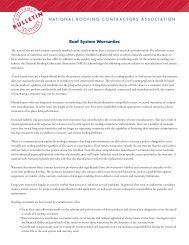Untitled - National Roofing Contractors Association
Untitled - National Roofing Contractors Association
Untitled - National Roofing Contractors Association
You also want an ePaper? Increase the reach of your titles
YUMPU automatically turns print PDFs into web optimized ePapers that Google loves.
All curbs, penetrations, roof drains and plumbing pipes<br />
must be in place before installing the roof. Openings tor<br />
curbs cut through the roof membrane after the roof has<br />
been completed can present a serious bitumen drippage<br />
problem when the membrane is constructed of low<br />
softening point bitumen. All curbs should be firmly<br />
fastened to the building structure or to the roof deck betore<br />
roofing material application. Roof drains, vent pipes,<br />
etc. should all be in place prior to roofing and restrained<br />
to prevent damage to the flashings or membrane that<br />
may occur if mechanical devices are installed over the<br />
completed membrane.<br />
Mechanical units mounted on pipe standards beneath<br />
which roofing materials will extend must be mounted to<br />
a height sufficiently above the roof to allow room to install<br />
the roof system and to make repairs beneath the unit.<br />
Heavy loads, such as large mechanical units, should not<br />
be rolled over the completed membrane, as they may<br />
cause damage to the roof. A failure in horizontal shear<br />
between the membrane insulation or deck from these<br />
loads may result in future splitting of the roof. NRCA<br />
recommends that mechanical equipment be installed on<br />
fully enclosed curbs (not on support stands) to eliminate<br />
the need for reroofing under these units when reroofing<br />
becomes necessary in the future.<br />
See the NRCA Construction Details for recommended<br />
mechanical equipment curb, stand and penetration<br />
flashings.<br />
As a final consideration, it should be noted that helicopter<br />
placement of mechanical equipment can cause damage<br />
to the roof system if the helicopter is operated too<br />
close to the roof surface.<br />
IX. PREFORMED ROOF INSULATION<br />
Roof insulation provides both the insulation for the building<br />
and a substrate to which the built-up roofing materials<br />
are applied. Therefore, it must be compatible with,<br />
and should provide support for, the roof membrane.<br />
An ideal roof insulation would have the following theoretical<br />
properties:<br />
. It would be able to withstand the bitumen application<br />
temperatures required for installation of the<br />
roof membrane.<br />
. It would have good physical strength, rigidity and<br />
impact resistance.<br />
. It would be incombustible and would be acceptable<br />
for insurance and building code requirements.<br />
. It would be constructed of materials that will resist<br />
deterioration.<br />
. It would be moisture resistant.<br />
. It would have a low k-value (thermal conductivity)<br />
so that the highest possible A-value (thermal resiStance)<br />
can be obtained in the thinnest possible<br />
piece of a particular insulation.<br />
. The k-value YX>uld remain constant and would not<br />
"drift" higher with age.<br />
. Its surfaces would accommodate secure<br />
attachment.<br />
. It would have dimensional stability under varying<br />
temperature and moisture conditions.<br />
. It would be manufactured so as to be compatible<br />
with the roof membrane.<br />
The qualifications listed above would be present in an<br />
ideal insulation. In practice, however, no single commercial<br />
product contains all of the ideal properties. Thus, the<br />
designer should choose materials with properties best<br />
suited to the specific project.<br />
Roof insulations, when used for the control of heat flow,<br />
should be installed in two layers (when thickness permits)<br />
with all joints offset between the upper and lower<br />
layers. The joints of the insulation should be installed to<br />
provide moderate contact at the joints. The upper layer<br />
should be installed with the long dimension of the insulation<br />
boards placed in a continuous line and the end<br />
joints staggered.<br />
14 15




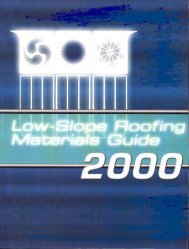
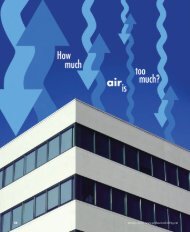

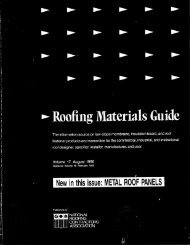
![Wm] - National Roofing Contractors Association](https://img.yumpu.com/36696816/1/190x245/wm-national-roofing-contractors-association.jpg?quality=85)

